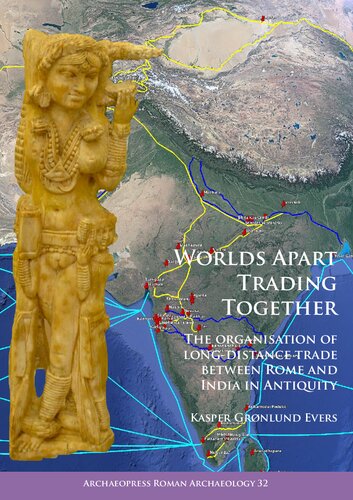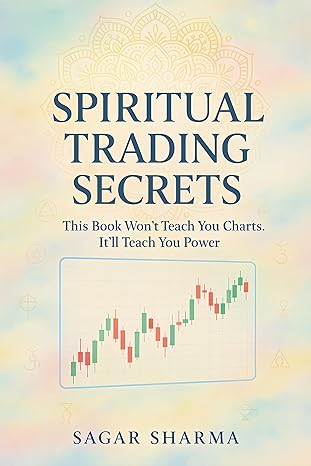Important discoveries made within the last few decades provide vital new information about the trade between the Roman Mediterranean and the Indian Ocean in Antiquity. Accordingly, it is becoming ever more clear that the long-distance trade between Rome and the states of the Indian Ocean littoral was conducted on a hitherto unprecedented scale, altering patterns of consumption and modes of production in both India, South Arabia and the Roman Empire. Moreover, whereas this commerce between East and West, traditionally termed ‘Indo-Roman trade,’ has previously been described primarily in terms of Roman interests and carriers, new source material, as well as more comprehensive use of the existing Indian evidence, now makes it possible to accord Indian producers, shippers and merchants their due importance. Fittingly, a new narrative like this mirrors present developments, these years witnessing India’s transformation into an economic and political world power in its own right. Indeed, present debates on globalisation even seem to have spilled over into an artistic appropriation of trade between the Roman Mediterranean and the Indian Ocean in Antiquity. Thus, that most avant-garde of conceptual artists, Damien Hirst, has recently staged an exhibition pretending to be pieces from an exotic Roman art collection, including many Indian pieces (and even some Indian-Roman hybrids, as well as pre-Hispanic artefacts!), raised from an early second century AD wreck purportedly ‘discovered’ off ancient Azania in South East Africa.1 In light of the real finds of Indian artefacts and goods in the Roman Empire and Roman ditto in Early Historic India, as well as the discovery of Roman-era shipwrecks at several sites in the Indian Ocean, art now seems to be closely imitating actual archaeological findings, whilst, fortunately, still upstaging itself enough to be distinguishable from real historical artefacts by its more absurd elements. On this note, and as a traditional academic study of the topic, the focus of this book will not be on what has traditionally been called ‘Indo-Roman trade’ generally, but on the particular organisations making the exchange possible in the first place, namely, networks, diasporas and associations. In practice, these categories were rarely clear-cut and very often overlapping, so any empirical example must rather be placed on a spectrum of mercantile organisation ranging from the individual trader acting more or less on his own to those who were part of larger private networks, such as family or friends, patronage or professional networks, via diasporas based on shared ethnicity and religion to associations defined by formal membership, set internal rules, and communal funds and property
چکیده فارسی
اکتشافات مهمی که در چند دهه اخیر انجام شده است، اطلاعات حیاتی جدیدی در مورد تجارت بین مدیترانه روم و اقیانوس هند در دوران باستان ارائه می دهد. بر این اساس، آشکارتر می شود که تجارت از راه دور بین رم و کشورهای ساحلی اقیانوس هند در مقیاسی تا کنون بی سابقه انجام شده است و الگوهای مصرف و شیوه های تولید را در هند، عربستان جنوبی و امپراتوری روم تغییر داده است. . علاوه بر این، در حالی که این تجارت بین شرق و غرب، که به طور سنتی «تجارت هند و رومی» نامیده میشود، قبلاً عمدتاً بر اساس منافع و حاملان رومی توصیف شده است، منابع جدید و همچنین استفاده جامعتر از شواهد موجود هندی، اکنون باعث شده است. میتوان به تولیدکنندگان، حملکنندگان و بازرگانان هندی اهمیت ویژهای داد. به درستی، روایت جدیدی مانند این منعکس کننده تحولات کنونی است، این سال ها شاهد تبدیل هند به یک قدرت جهانی اقتصادی و سیاسی به تنهایی هستیم. در واقع، به نظر میرسد که بحثهای کنونی درباره جهانیشدن حتی به تخصیص هنری تجارت بین مدیترانه رومی و اقیانوس هند در دوران باستان سرایت کرده است. بنابراین، آن پیشروترین هنرمندان مفهومی، دیمین هرست، اخیراً نمایشگاهی را به نمایش گذاشته است که وانمود میکند قطعاتی از یک مجموعه هنری عجیب و غریب رومی است، شامل بسیاری از قطعات هندی (و حتی برخی از ترکیبهای هندی-رومی، و همچنین مصنوعات پیش از اسپانیایی !)، برخاسته از یک کشتی شکسته در اوایل قرن دوم پس از میلاد ظاهراً در آزانیا باستانی در آفریقای جنوب شرقی "کشف" شده است. 1 با توجه به یافتههای واقعی از مصنوعات و کالاهای هندی در امپراتوری روم و رومیان در هند باستانی تاریخی، و همچنین با کشف کشتیهای غرقشده دوران رومی در چندین مکان در اقیانوس هند، هنر اکنون به نظر میرسد که از یافتههای باستانشناسی واقعی تقلید میکند، در حالی که، خوشبختانه، هنوز آنقدر خود را ارتقا میدهد که با عناصر پوچترش از مصنوعات تاریخی واقعی قابل تشخیص باشد. با توجه به این نکته، و به عنوان یک مطالعه آکادمیک سنتی در مورد موضوع، تمرکز این کتاب بر آنچه به طور سنتی به طور کلی "تجارت هند و رومی" نامیده می شود، نخواهد بود، بلکه در وهله اول بر سازمان های خاصی که مبادله را امکان پذیر می کنند، خواهد بود. یعنی شبکه ها، دیاسپوراها و انجمن ها. در عمل، این دستهبندیها به ندرت واضح بوده و اغلب با هم تداخل دارند، بنابراین هر مثال تجربی را باید در طیفی از سازمانهای تجاری قرار داد، از تاجر فردی که کم و بیش به تنهایی عمل میکند تا کسانی که بخشی از شبکههای خصوصی بزرگتر هستند. مانند خانواده یا دوستان، شبکههای حمایتی یا حرفهای، از طریق دیاسپورا بر اساس قومیت و مذهب مشترک به انجمنهایی که با عضویت رسمی، قوانین داخلی تنظیم شده، و سرمایههای مشترک و دارایی تعریف شدهاند
ادامه ...
بستن ...
Author(s): Kasper Grønlund Evers
Series: Archaeopress Roman Archaeology 32
Publisher: Archaeopress Archaeology, Year: 2017
ISBN: 1784917427,9781784917425
ادامه ...
بستن ...










